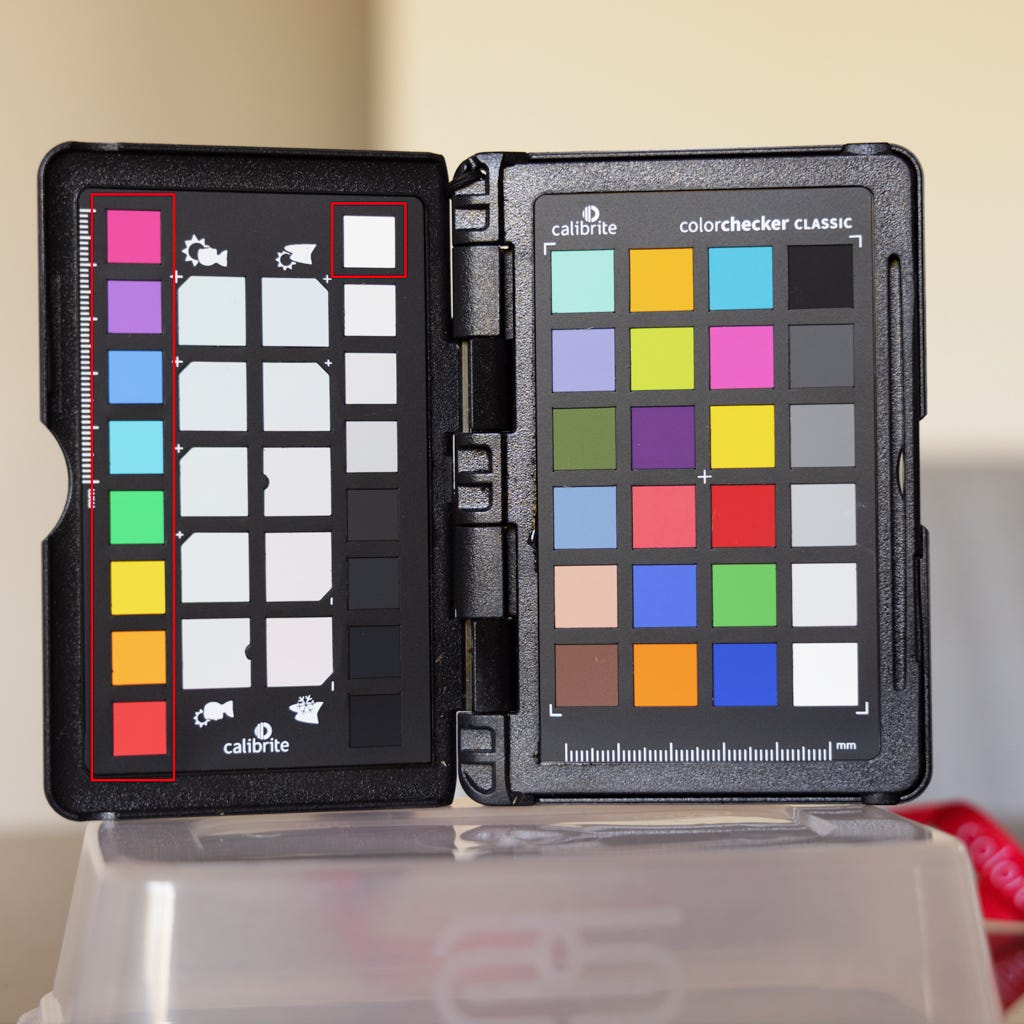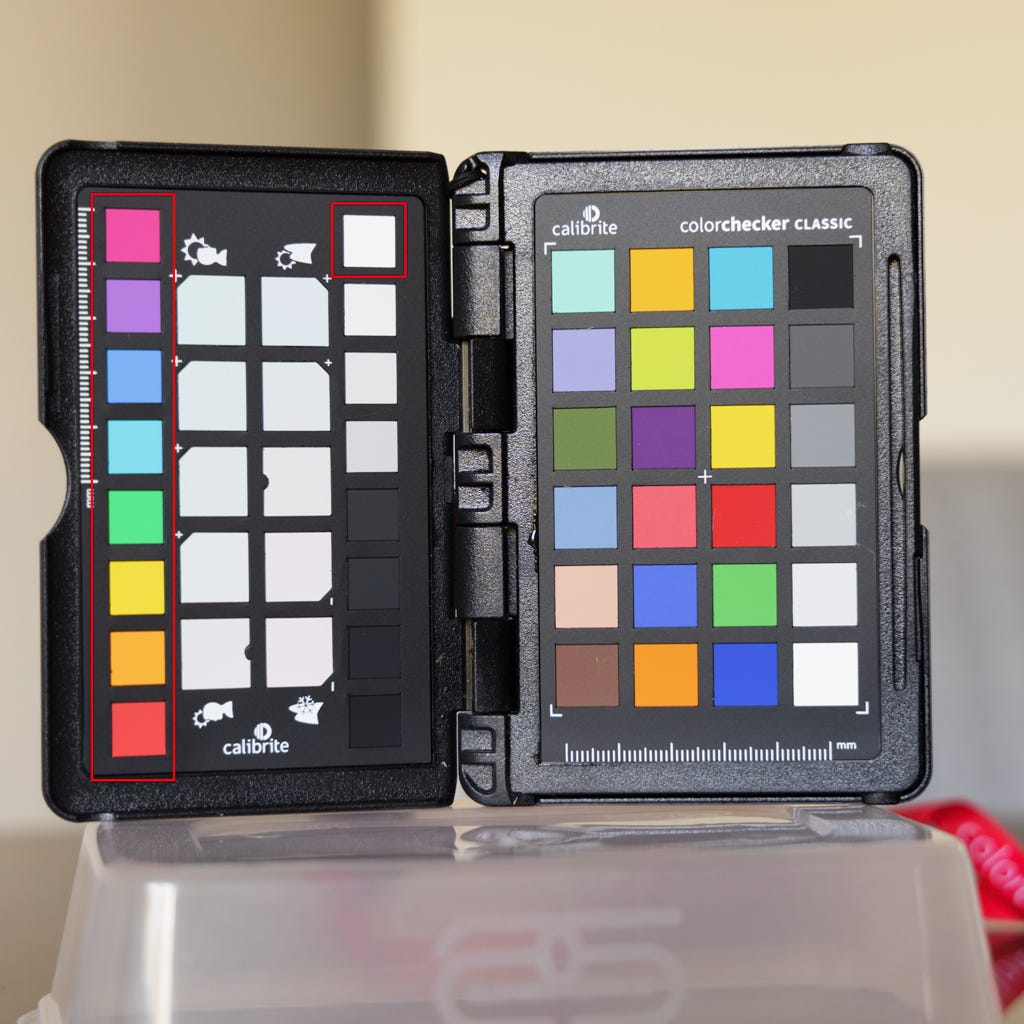Haida Red Diamond Neutral Density Filter Test
Measuring the colour neutrality of Haida Red Diamond ND filters
Introduction
Welcome to my blog ‘Beyond the Frame’ and thank you for subscribing. Posts will be occasional but I’ll do my best to make them informative and useful.
I've written this article because I was so impressed with the sharpness and colour neutrality of the Haida Red Diamond Neutral Density (ND) filters that I felt I needed to do some tests, capture some figures in attempt to prove how colour neutral they are, and share that information with whoever might be interested.
This article is not a review of the Haida M10 MK II Filter holder which I purchased at the same time. However, I should quickly mention that it's the best filter holder I have used to date, and I'm happy to write a review if there's interest. Leave a comment if that's something you'd like to read. I should also state that I have not been paid or been given any product or other benefits for writing this review.
If you aren't sure what ND filters are, simply put, they are accessories for your camera lenses that attenuate light so that you can keep the shutter open for much longer than you might normally be able to during daytime shooting. Moving objects like water and clouds become softened and blurred in an aesthetically pleasing way. You can also use them to avoid moving objects, like people or vehicles, appearing in the image. They come in square, screw-on, drop-in, or magnetic formats, and are usually glass but resin filters are also available, depending on the brand.
If you're interested in where to purchased Haida products, I've provided that information at the bottom of this article.
Background
Back in 2023 I purchased a Haida M10 MK II filter holder kit with a drop-in Circular Polariser (CPL) and a set of adapter rings for my various lenses.
I've been shooting long exposure images for years and have used a variety of filter holder kits and filters, including:
Formatt Hitech Filter holders
Formatt Hitech filters Firecrest and Firecrest Ultra ND and ND Graduated filters
NiSi Filter Holder and CPL (version 5 as I recall)
Lee Filter Holders - the original and the latest version
Lee Filters - Resin and Proglass
Having owned and used all of these, I have a pretty good understanding of their pros and cons as well as features that I like and would want in any filter system. I was never 100% satisfied with any of them and so was regularly on the lookout for new suppliers and models.
If you've ever purchased filters yourself, you probably know they can be subject to colour casts, requiring extra steps in post processing to remove. This can be particularly problematic for poorer quality filters.
Although, at the time, I was mostly interested in the Haida filter holder, I was keen to try the Red Diamond filters too, as I'd been recommended them several years ago by fellow photographer Rohan Reilly, a master of minimalist long exposures.
I acquired the 12-stop initially and my tests were based on shots taken with that filter. I have since purchased the 6-stop, a 2-stop ND Grad, and will be replacing my other filters (mostly Formatt Hitech Firecrest Ultras) with Haida filters (where they supply filters of the same filtration value). They don't have the same range of stops as Formatt Hitech Firecrests - their 13-stop, for example, is one of my most used filters, hence my interest in the Haida 12-stop.
Testing Approach
I'm not for a moment going assert that this is a particularly scientific testing methodology but I think it's good enough to prove, to my satisfaction at least, how colour neutral the Red Diamond filters are.
I set up my Calibrite Colorchecker Classic in my kitchen where I had plenty of natural light. It was around 10 o'clock in the morning so the light levels and colour temperature were nice and stable. I shot the Colorchecker with my Canon R5 and the Canon RF 24-105mm F4 L IS USM lens. The camera was set to Auto White Balance (AWB) and I was shooting to capture RAW images, not jpegs.
I first shot the Colorchecker without any filter and then inserted the 12-stop filter, switched the mode to Bulb mode and set the number of seconds to obtain an equivalent exposure. I took several shots using this method.
Having captured a few images in this way, I imported them into Adobe Lightroom Classic and the only adjustments made were:
Lens corrections
White Balance. I used the white square shown on the screenshot below. (I also took one set of measurements without correcting White Balance in Lightroom)
I opened one long exposure image and one unfiltered image as layers in Photoshop and used the Eyedropper tool set to ‘5 x 5 Average’ to obtain the RGB values for the 8 squares down the left hand side of the Colorchecker. I’ve overlayed in red the squares I used for the sampling in these tests.
I recorded all the RGB values in an Excel table with columns for those values with and without the filter. Those values recorded with the filter on have column headings appended 'LE'. I did this for the white balanced and non-white balanced images.
I then created a graph to more easily see those values represented visually.
Results
As you can see from both graphs, the lines plotted for the RGB values for those 8 colours almost exactly overlap, clearly indicating that there is barely any variance at all in the colours captured with the filter on. Amazing!
Values and graph for non-white balanced images:
Values and graph for white balanced images:
In case it’s not clear, if you look closely for Red, Green, and Blue values for each of the 8 colours on the x-axis, there are two lines. I’ve used darker coloured lines for the long exposure image values. Below is a closeup so you can clearly see that there are two sets of values for R, G, and B, but they are so close in value that the lines plotted for the non-filtered image are almost completely overlapped, demonstrating that the colours captured when using the filter are identical to those captured without a filter.
If you found this useful and think others photographers might also benefit from reading it, please consider sharing it on your feed.
Where to purchase Haida Products
If you're suitably convinced and wish to purchase some Haida Red Diamond filters, I would, without hesitation, recommend BH Photographic. Based in Ireland, they supply UK and Ireland with a full range of Haida products. If you are outside of UK and Ireland, speak to Brian, he may still be able to supply you.
Brian is also able to provide any advice you might need about the products and their use.
https://www.bhphotographic.eu/
https://www.bhphotographic.eu/shop/p/haida-red-diamond-series-filters
You might find this table helpful if you want to be sure how many stops of light each of the Haida filters attenuates:
I'd also urge you to consider the M10 MK II filter holder as well; it is excellent. Don't forget lens adapters.
https://www.bhphotographic.eu/shop/p/m-10-mk-ii-filter-holder
https://www.bhphotographic.eu/shop/p/haida-adapter-ring-37mm-95mm
Also, treat yourself to one their microfiber cloths. They're the best cloths I've used for cleaning my lenses and filters.
https://www.bhphotographic.eu/shop/p/haida-microfiber-lens-cleaning-cloth











Very insightful article Phil 👍🏻 and I agree about the holder and microfibres cloths, just brilliant.